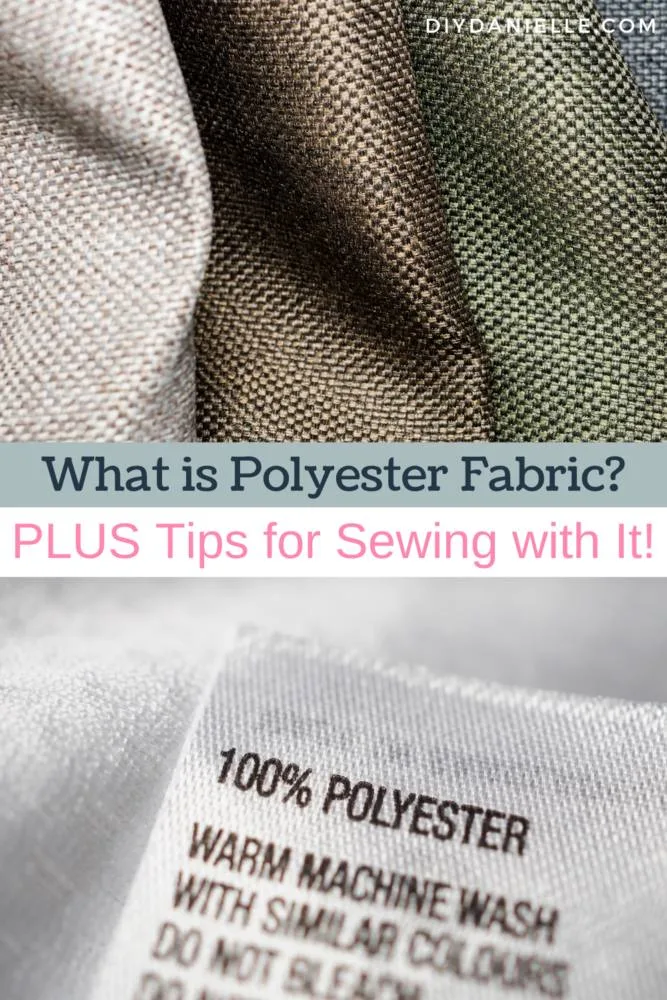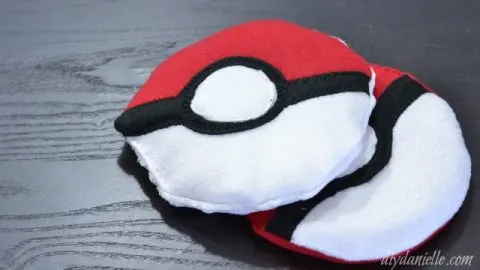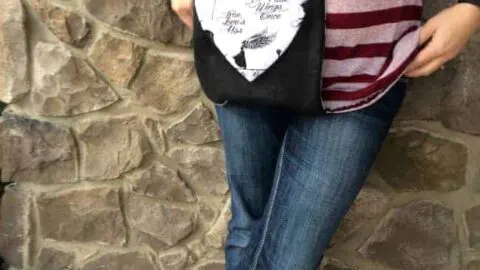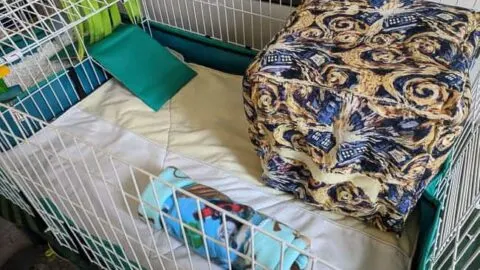What is polyester fabric and how is it made? Information on this durable and wrinkle resistant fabric- and tips on how to sew it!
Polyester is one of the most commonly-used fibers of the last few decades because it’s affordable, versatile, and aesthetically pleasing. It’s used in everything from clothing to housewares and can be manipulated by hobbyists to create almost anything you can dream up, but before you start working with this notoriously demanding fabric you should learn a few basic facts to get a better understanding of polyester fabric.
What is Polyester?
Polyester is a 100% synthetic fiber made from plastic polymers. Polyester fiber is a popular option for blends because it offers some stretch without compromising the appearance of the blended fabric. It’s usually pretty inexpensive because it’s produced on such a large scale and the material to make it is so cheap.
It’s a fairly modern invention, having only been discovered in the 1930s, but it’s been rapidly developed into many different fabrics and blended with other materials to improve the qualities of other fabrics for specific uses.
Polyester can be made in any color and print as well as many textures and finishes. In addition to the attractive price point, polyester has several advantages over other fabrics:
Durable
Polyester fiber is incredibly strong and the same can be said of polyester fabric. It doesn’t pill as easily as other fabrics and isn’t prone to tearing when pulled. It lasts a long time and can be used for years if properly cared for.
Retains shape
The flexible plastic fibers that it’s made with give polyester the ability to easily retain its original shape. It doesn’t permanently distort when stretched and snaps back into its original shape over and over again.
Water Resistant
Because it’s made of synthetic materials, polyester is water resistant (though not usually waterproof) and doesn’t absorb moisture easily. It doesn’t absorb water as well as natural fabrics, making it a great choice for outdoor applications where it may be exposed to precipitation.
Wrinkle Resistant
Polyester fabric doesn’t crease or wrinkle easily unlike natural fabrics with similar finishes. It resists creasing and goes right back to its original state even when tucked or crumpled for a long period of time like long car rides or folding.
Stain Resistant
Its water resistant quality and poor absorption also makes polyester highly stain resistant compared to other fabrics. Heavy oils are the most likely to cause stains, but water-soluble liquids will have a harder time sticking to this wonder fabric.
How is Polyester Fabric Made?
Polyester is made through a process called polymerisation, in which two or more different polymers (usually ethylene glycol and terephthalic acid) are combined to form a plastic that is melted down and extruded through tiny holes to form strands of fiber that can be spun into threads.
The threads are then loaded into machines that weave or knit them together to form different polyester-based fabrics (or blends if combined with other fibers) and finishes. It can be shiny, matte, fluffy or smooth.
Fabrics Made Using Polyester Fiber
Polyester fabric is an umbrella category that can refer to several different types of fabrics made from 100% polyester fibers. A few examples are polyester fleece and minky fabric.
Polyester fleece
Polyester fleece is made entirely out of polyester. It has symmetrical texture on both sides of the fabric. This synthetic fleece traps heat well and makes great blankets, scarves and hats.
Minky fabric
Minky fabric is soft, fuzzy, insulates well, and is great for making cozy cold-weather goods like hats, scarves, mittens, and blankets.
What Can You Make With Polyester Fabric?
Polyester is a very popular choice for all kinds of things ranging from clothing and blankets to crafts and everything in-between.
- Athletic apparel
- Casual clothing
- Outerwear and outdoor gear
- Swimwear
- Hats and gloves
- Bags and backpacks
- Blankets
- Upholstery
- Home decor textiles
Fabric blends with a high percentage of polyester (above 90% is good but 100% is preferred if possible for guaranteed results) are great for sublimation and Cricut Infusible Ink projects.
How Does Polyester Impact the Environment?
Unfortunately, polyester is one of the least environmentally-friendly fabrics in use. It’s completely synthetic and made of a non-renewable plastic, so it’s not biodegradable and may take hundreds of years to break down once it’s been used to the end of its life and discarded.
Polyester fabric also sheds tiny toxic fibers when using or washing that get into the water supply and can be unknowingly digested (and stuck in the human body) or leach chemicals into the water we drink.
Producing polyester uses twice as much energy as production of most natural fibers, even particularly unsustainable ones like standard cotton, though it doesn’t use a significant amount of water or land to produce. It is made in factories that can produce heavy amounts of pollutants and carbon emissions.
Tips for Sewing With Polyester Fabric
- Protect the edges
Polyester is very prone to fraying, so it’s important to sew, glue, or melt your edges to make sure they don’t unravel your fabric.
- Use fresh, sharp needles every time you sew polyester fabric
Polyester can snag easily and it’s important to use the sharpest, smallest possible needle on your polyester project. This isn’t the place to skimp and reuse old, dull needles–using a fresh microtex or other super sharp needle every time will ensure your polyester sewing project goes smoothly.
- Reduce slip on smooth polyester fabrics
Certain silky polyesters have a tendency to slip around when you’re trying to work with them. Use a starch spray or a layer of tissue paper to reduce the amount of movement (and the possible mistakes that could come from movement).
- Take it easy on the heat
As mentioned earlier, polyester fabrics melt really easily when exposed to heat. Use the lowest possible temperature setting on pleats and seams.
- Direction of the grain matters
Make sure you have the grain lined up for cutting with your specific purpose in mind. Generally, you don’t want to go against the grain, but carefully cutting crossgrain can give the fabric a little more stretch when you need it, like for form-fitting or active clothing.
Projects with Polyester Fabric
Sewing Projects with Polyester Fabric
How To Sew Cage Liners For Guinea Pigs
Sew your own cage liners for guinea pigs. It's a budget-friendly option and easier than you think.
DIY Carseat Poncho for Kids
Learn to sew a car seat poncho and keep children warm in their car seats without sacrificing safety.
How to Make a Paw Patrol Ryder Costume
Make an adorable Paw Patrol Ryder costume that is also sensory friendly for children.
DIY Everest Paw Patrol Costume
Learn how to make this adult Paw Patrol costume. It can also be adjusted to make a children’s costume too!
Interested in learning more about different fabric types? Check out my other posts about fabric including: EcoFriendly Fabrics | What is Wool Fabric? | What is Linen Fabric? | What is Silk Fabric? | What is Cotton Fabric? | What is Hemp Fabric? | What is PUL Fabric? | What is Tencel Fabric? | What is Minky Fabric?
Please share and pin this post! If you make this project, share it in our Stuff Mama Makes Facebook Group. We have regular giveaways for gift cards to craft stores. You can also tag me on Instagram @doityourselfdanielle; I love seeing everything you make!












